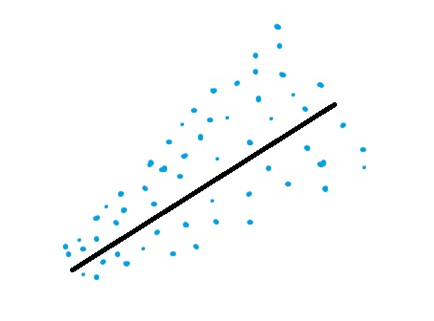
Time Series and its components
Abir Jameel
- October 17, 2021
Before we dive into time series analysis and understand modelling and application of machine learning to time series data, it is better to understand what time series data consists of and how it can affect different models.
First, the components of time series – any time series can contain some or all the following components –
-
- Trend
-
- Seasonal
-
- Cyclical
-
- Noise
These components can be mixed in different ways, but two very commonly assumed ways are additive (Y = Trend + Seasonal + Cyclical + Irregular) and multiplicative (Y = Trend * Seasonal * Cyclical * Irregular).
The Trend Component
The trend is a long-term change in the mean of a time series. It is the smooth and steady movement of a time series in a particular direction. When the time series moves upward, we say there is an upward or increasing trend, while when it moves downward, we say there is a downward or decreasing trend. As you can see in the image below contains both AAPL close price over a quarter and its trend and seasonal component.
The Seasonal Component
When a time series exhibits regular, repetitive, up-and-down fluctuations, we call that seasonality. For instance, the close price showing fluctuations weekly this could be due to buying and selling pressure in the beginning and mid of every month. In order to account the seasonal component in time series models, it is often suggested to de-seasonalize time series and then build machine learning models, however in classical statistical modelling SARIMA is used to include seasonal component in forecasting models.

The Cyclical Component
The cyclical component is often confused with seasonality, but it stands apart due to a very subtle difference. Like seasonality, the cyclical component also exhibits a similar up-and-down pattern around the trend line, but instead of repeating the pattern every period, the cyclical component is irregular.
The Noise Component
This component is left after removing the trends, seasonality, and cyclicity from a time series. Traditionally, this component is considered unpredictable and is also called the residual or error term. In common classical statistics-based models, the point of any “model” is to capture all the other components to the point that the only part that is not captured is the noise component.
About Author
Abir Jameel
Assessing the forecastability of a time series

Heteroscedasticity in Time Series
Recent Comments
Categories
Archives
- May 2024 (1)
- January 2024 (1)
- October 2023 (1)
- July 2022 (1)
- October 2021 (2)
Categories
- Advanced 1
- Beginner 2
- Intermediate 2
- Tech 2


1 Comment
Great article! I really appreciate the clear and detailed insights you’ve provided on this topic. It’s always refreshing to read content that breaks things down so well, making it easy for readers to grasp even complex ideas. I also found the practical tips you’ve shared to be very helpful. Looking forward to more informative posts like this! Keep up the good work!